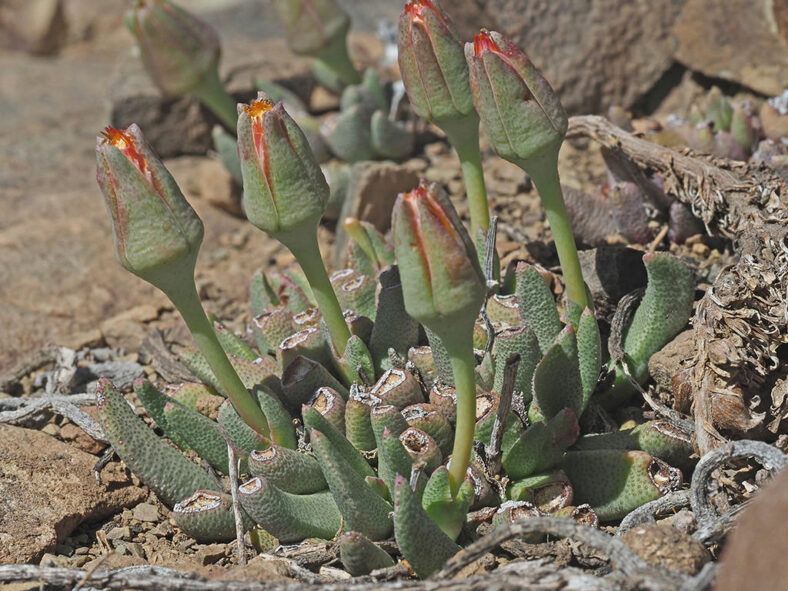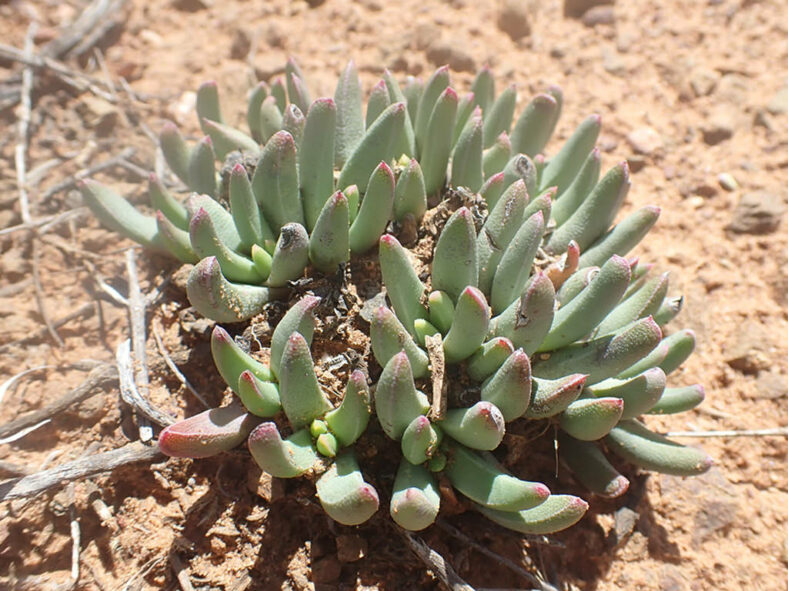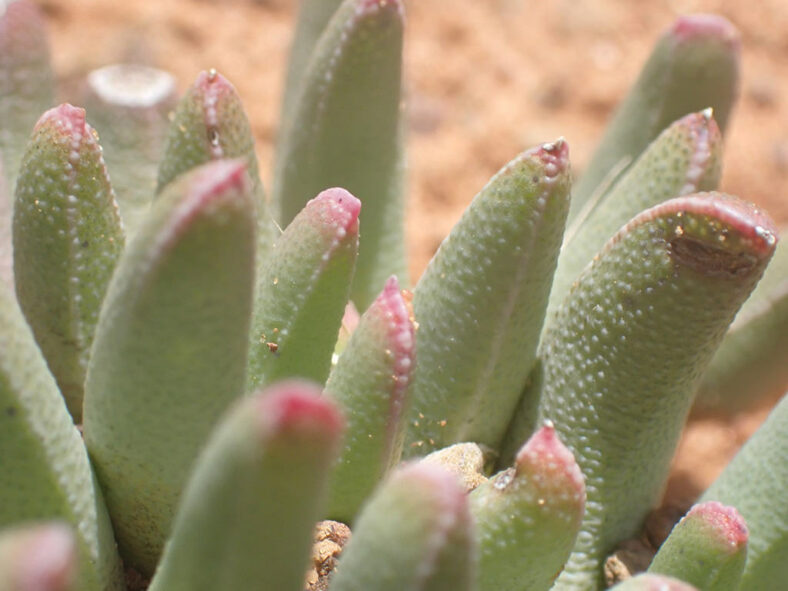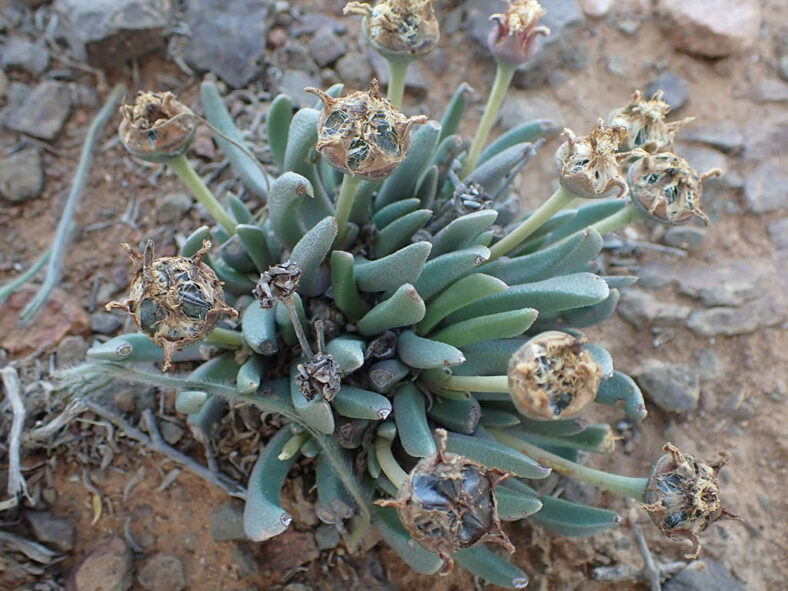Hereroa calycina is such a lovely little plant that only requires minimal maintenance.
Scientific Name
Hereroa calycina L.Bolus
Scientific Classification
Family: Aizoaceae
Subfamily: Ruschioideae
Tribe: Ruschieae
Genus: Hereroa
Etymology
The specific epithet "calycina" (pronounced ka-LEE-kin-uh) means "having a pronounced or notable calyx."
Origin
Hereroa calycina is native to South Africa. It grows in flats and hills of karoo shales or siltstones in the Eastern Cape province.
Description
Hereroa calycina is a dwarf succulent shrublet with short branches and fleshy, rough leaves. It can reach up to 2 inches (5 cm) in height. The opposite leaves are triangular in cross-section, often incurved, and covered with tiny raised dots. They can grow up to 1.6 inches (4 cm) long and reach a diameter of 0.3 inches (0.8 cm).
During winter and spring, Hereroa calycina produces solitary flowers on short stalks. The flowers have five sepals, the same color as the leaves, and numerous narrow yellow petals growing in several whorls. They can measure up to 1.1 inches (2.8 cm) in diameter and open during the afternoon or evening. The petals are often reddish on the lower surface and near the tips. The fruits are woody, dark brown capsules with five locules.

How to Grow and Care for Hereroa calycina
Light: Hereroa calycina requires bright light but not too much direct sunlight. So, a windowsill that receives 4 to 5 hours of direct sunlight in the morning and partial shade in the afternoon will be a perfect spot for indoor growing.
Soil: The plant thrives in porous soil, allowing the water to drain away quickly. Therefore, use commercial soil for succulents or make your own well-draining mix.
Temperature: High temperatures are not a problem as long as there is plenty of fresh air, but this plant is not cold-hardy. It grows best in USDA Plant Hardiness Zones 9b to 11b, with average minimum winter temperatures ranging from 25°F to 50°F (- 3.9°C to 10°C).
Watering: To keep Hereroa calycina healthy, it is essential to know when, how much, and how often to water. During the dormant period, usually in summer, the plant requires little or no water. When it begins to grow again in the fall, water it thoroughly but allow the soil to dry between waterings.
Fertilizing: As long as you repot this plant every two years, it does not need fertilizer.
Repotting: Even if your plant can stay happy in the same pot for years, you can repot it once in a while to give it more space anytime during the growing season. However, the best time is at the beginning of the growing season.
Propagation: Although Hereroa calycina is usually started from seeds, it can also be easily propagated from stem cuttings during the growing season.
Learn more at How to Grow and Care for Mesembs.
Toxicity of Hereroa calycina
Hereroa calycina is considered non-toxic, so it is safe to have around kids and pets.
Links
- Back to genus Hereroa
- Succupedia: Browse succulents by Scientific Name, Common Name, Genus, Family, USDA Hardiness Zone, Origin, or cacti by Genus
Photo Gallery
Click on a photo to see a larger version.


